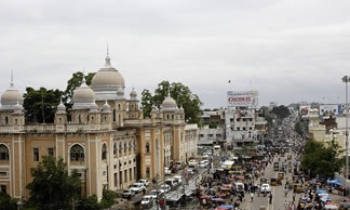The exponential growth of the language media in the past few years has made media planners to take them into consideration while selecting medium for publicity. Not only have there been additions in the number of publications, language dailies have shown a formidable increase in the readership and circulation, which is much higher than the English counterparts.
According to the latest round of IRS 2003-2004, the readership of Dainik Jagran (number one vernacular daily) stands at a monumental 1,57,22,000 - a whopping 68% increase over its 93,56,000 readers in 2000 (IRS 2000, Round 2) - while The Times Of India (number one English daily) enjoys a readership of 72,35,000 - a 31% increase over its 55,42,000 readers, last time (IRS 2000, Round 2).
Says PRP Nair, Senior VP - Media Direction, RK Swamy BBDO: "Language media has grown due to milk editions, fresher news and local centres, while national dailies have certain limitations." Citing the success story of Vijay Karnataka, he adds: "The owner of Vijay Karnataka used to run a transport business. He realised that readers of Prajavani, the leading regional daily, were getting news of two days old. He launched Vijay Karnataka in October 1999, setting up centres at distances of around 100 kms and began delivering fresh news. Distributions within 100 kms were covered within two hours, on the strength of his existing transport business. There are certain product categories that customers don't wait for, and sure enough, readers of Prajavani switched over to Vijay Karnataka." As per the latest round of IRS 2003-2004, Vijay Karnataka enjoys a readership of 55,33,000, while Prajavani is a distant second at 29,71,000 readers.
Lakshmi Narasimhan, Investment Services Director, Mindhsare Fulcrum informs that national advertisers are now giving due importance to the regional media while working on a media plan. "There are multiple reasons supporting this change in attitude. For instance the South, West Bengal and Maharashtra - to name a few pockets which do not have national channels of communications, and this makes it imperative for a client or an agency to consider the language media," he says.
"Even while working out a media plan for metros, the mix is important. No advertiser wants to take only English dailies as stand alones and miss out on the reach and visibility provided by the language media." He also mentions that in spite of the growth in literacy, national dailies have not grown as much as language ones."
Having found greater acceptance among the viewers and readers, regional media has now become more content-conscious and is paying greater attention to it. They attempt to provide not only the latest news but also a wider variety of news to suit the tastes of different types of viewers or readers. It can be said that in most cases content goes at par with national dailies and magazines, thus providing more value for money.
Cost is another factor that adds to their popularity. Regional media delivers to a much larger audience at a much lower cost compared to the national dailies. They turn out to be more cost effective with CPTs working out to be much cheaper. A comparison of rate cards shows that, CPTs for English publications (excluding TOI, which stands at 400) range between 110-200, whereas for language publications they are in the range of 40-80.
Statistics show that nine out of the top ten widely read dailies in India are regional newspapers. One would think with the increase in readership, advertising rates would follow suit, but apparently that is not the case. Advertising rates for language dailies are much cheaper compared to English. Having been the first to arrive in the market, national dailies have always dictated the price. In their catchments area, they are in a position to hike rates and capitalise on the advantage.
However, regardless of the image, price and advertising rates of regional media, the simple fact is that advertisers can no longer ignore or sideline them. Even high-profile brands do not mind advertising in regional media. The choice is no longer between regional daily and national daily, but the criteria, instead, is reach of the publication and the budget for publicity.
The question thus arises that if regional media is growing in leaps and bounds where have these additional players come from? Are they new readers or is the local media eating into the market share of other players? "The magazines have felt some of the brunt," says Narasimhan. "The newspaper to magazine revenue ratio was 83 : 17 in 2002 that changed to 86 : 14 in 2003. Magazine section is also shrinking due to lesser time for reading. Working hours are no longer limited to 9 to 5 and even when people have time in hand they prefer to watch TV," he adds.
So, the language media has seems to have come of age and proves to be a threat for English dailies. This threat is not likely to shrink in the near future; perhaps it is all for the better with the latter finally facing the much-needed healthy competition. But as far as the viewer or reader is concerned, it is their job to simply ask for more and chances are they will keep getting it.









